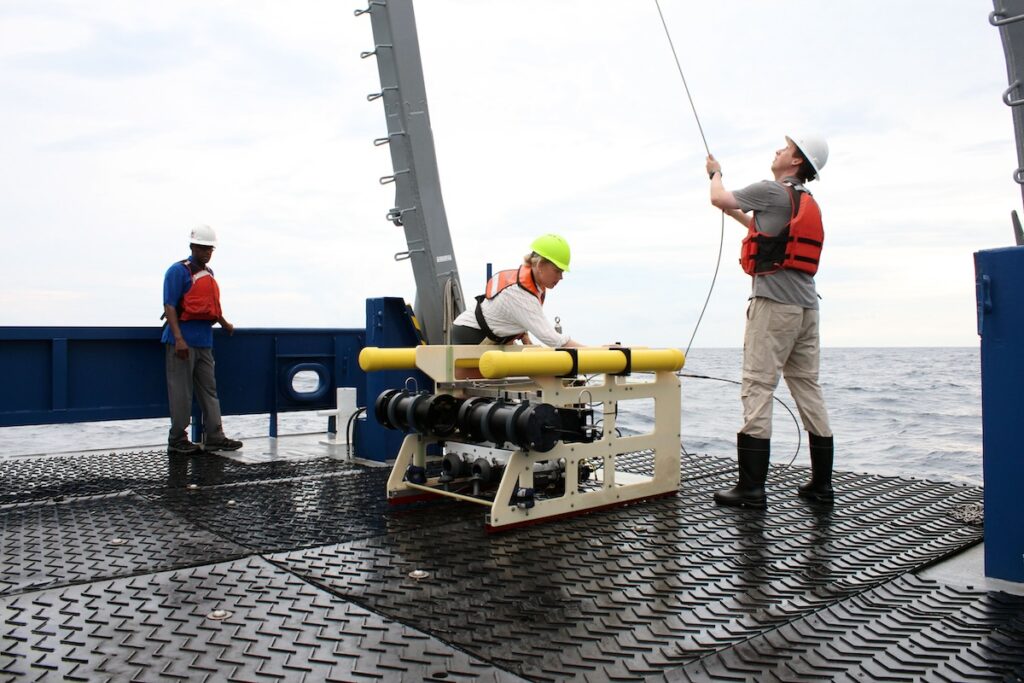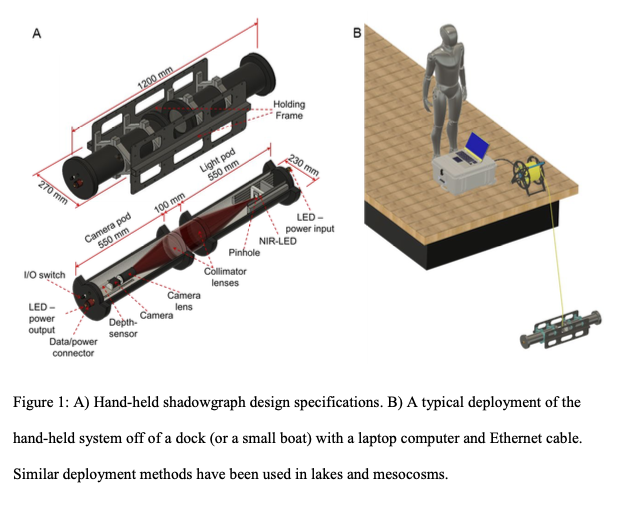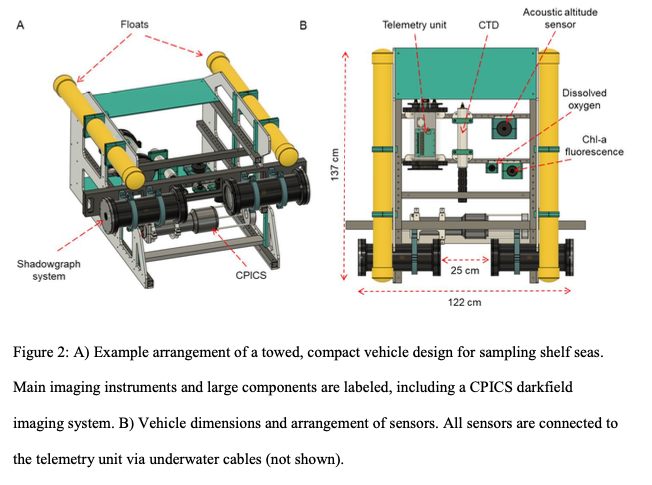
A team of researchers led by University of Georgia Skidaway Institute of Oceanography (SkIO) scientist Adam Greer is using a new generation of modular shadowgraph imaging systems to study plankton, allowing for more versatile and affordable approaches to researching the small, mysterious organisms in a wider range of freshwater and marine environments.
In a new paper, recently published in Limnology and Oceanography: Methods, Greer and his team of co-authors, which includes SkIO doctoral student Patrick Duffy and former master’s student Kyle Aaron, detail a benchtop imaging device, a handheld device, and another that can snap photos while being towed behind a vessel. Compared to older, heavier plankton imaging instruments, these new systems offer adaptability in imaging depth of field, sensor configuration, deployment method and location of deployment, allowing scientists to analyze plankton communities everywhere from the open ocean to shallow, intracoastal rivers.
“We’re just trying to show people that you should be able to customize the instrument to fit the research question, as opposed to being tied to the instrument,” said Greer.
Shadowgraph imaging is an optical technique that is used to reveal irregularities in a clear substance, such as, in this case, water. It involves using special lenses to turn a small, camera-facing light source into parallel beams. These parallel beams are known as collimated light, and they pass through a water sample before being focused into a camera. The plankton in the water pass through the collimated light, and the camera detects them as shadows.

Benchtop imaging system
The benchtop imaging system is designed to sit on top of a lab bench and film collected plankton as they swim within beakers. The primary purpose of the benchtop imaging system, Greer explained, is that it can pick up on the unique swimming motions of specific plankton and be used to create large machine training libraries to help identify rare or obscure looking plankton captured in images taken by the handheld and towed imaging systems.
Handheld plankton imaging instrument
The handheld plankton imaging instrument, which is comparatively small and lightweight, is optimized for controlled experiments and shallow water observations. It is often deployed off of a dock or small boat.
It has a pressure sensor that measures how deep it is underwater and takes pictures at different depths as it sinks, creating a stack of images showing the plankton at each level. These images are then displayed live on a computer screen, or they can be recorded internally.

Towed plankton imaging instrument
Weighing roughly 150 pounds, which is about an eighth of the size of traditional models, the towed instrument gets deployed and pulled by a vessel. It then dives down and up through the water column, taking images of various plankton as they pass through the device’s camera. Similarly to with the handheld device, the images the instrument takes are displayed live on a computer screen, typically within the vessel’s dry lab.
The device is currently configured to reach depths up to 60 meters; however, it can also operate in much more shallow waters. Its camera depth of field is adjustable, allowing researchers to take high-quality, informative images in nutrient dense areas (that are often chock-full of plankton) as well as in the open ocean, where plankton populations are sparser.

About SkIO
The UGA Skidaway Institute of Oceanography (SkIO) is a multidisciplinary research and training institution located on Skidaway Island near Savannah, Georgia. The Institute was founded in 1967 with a mission to conduct research in all fields of oceanography. In 2013, SkIO was merged with the University of Georgia. The campus serves as a gateway to coastal and marine environments for programs throughout the University System. The Institute’s primary goals are to further the understanding of marine and environmental processes, conduct leading-edge research on coastal and marine systems, and train tomorrow’s scientists. For more information, visit www.skio.uga.edu.



One comment on “New generation of plankton imaging systems offer flexibility”
Comments are closed.